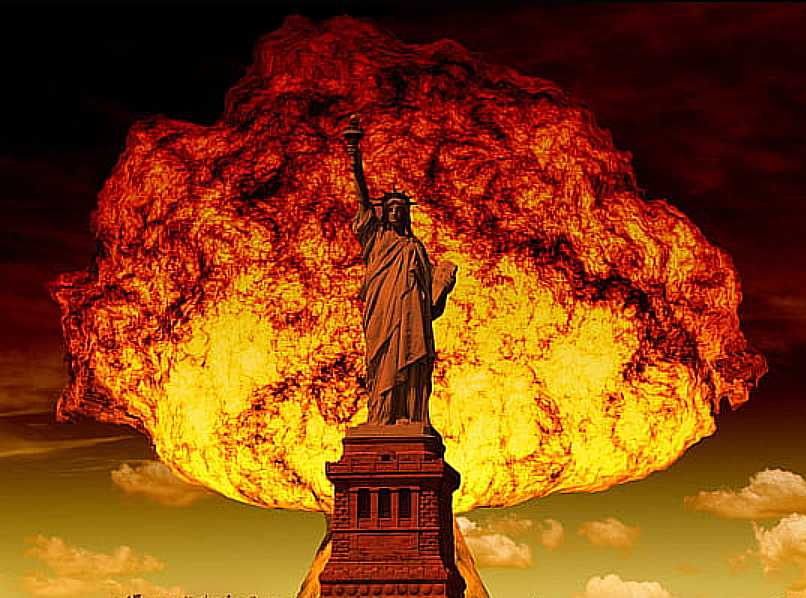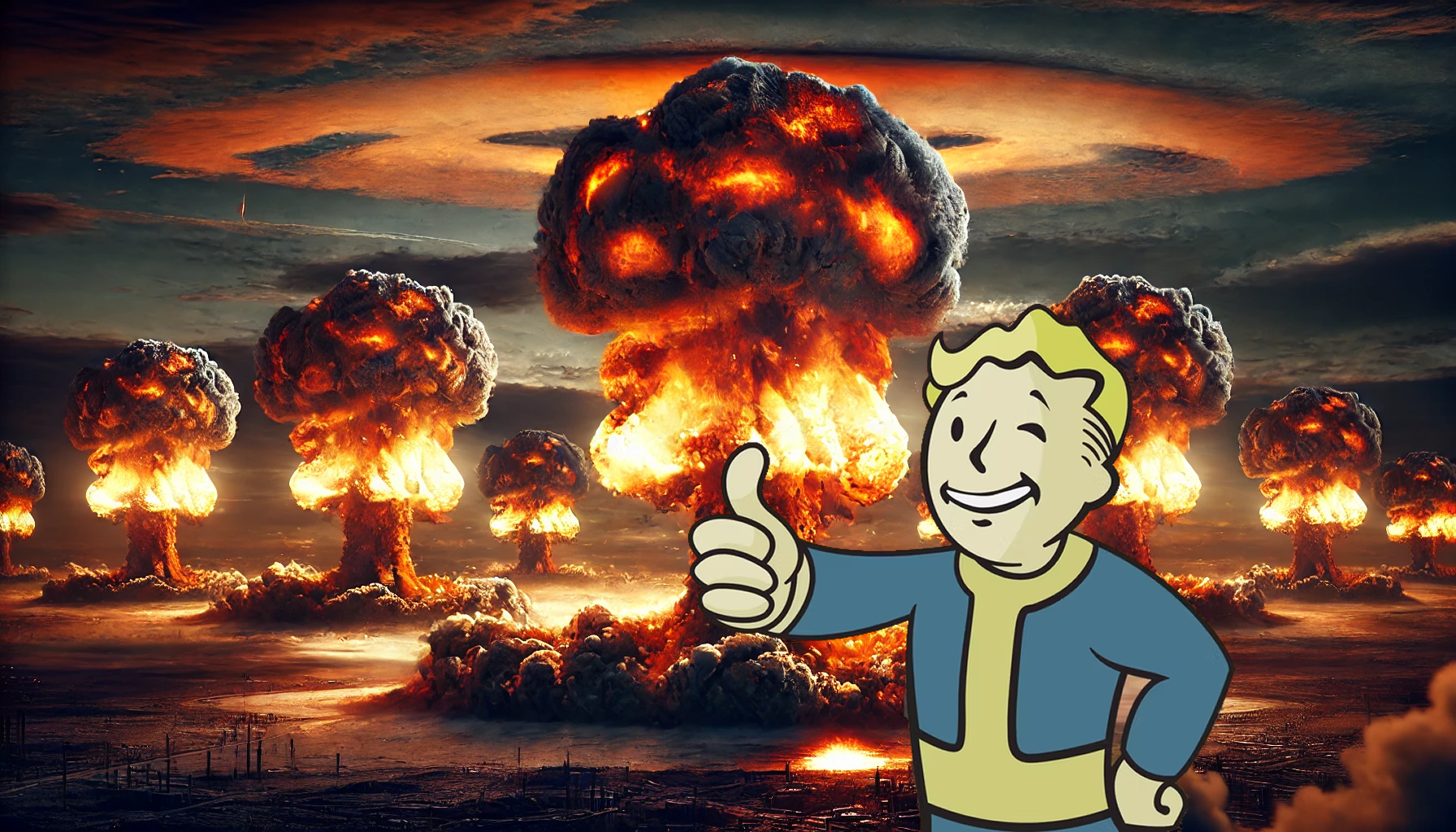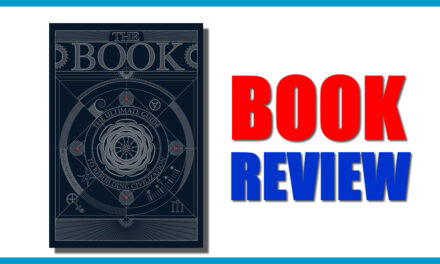The global landscape feels more volatile than ever. With escalating tensions among major world powers, the risk of nuclear conflict is a topic that’s increasingly hard to ignore. From Russia’s aggression in Ukraine to China’s strategic ambitions in Asia, and the unpredictability of Iran and North Korea, these factors contribute to a sense of unease. Just how likely is nuclear war in the near future? Let’s examine the risks and look at the factors shaping this sobering question.
Rising Tensions with Russia: How Likely is Nuclear War with Russia?
Russia’s invasion of Ukraine in 2022 drastically changed global security calculations. Not only did it test NATO’s strength and unity, but it also reminded the world of Russia’s nuclear capabilities. Russian President Vladimir Putin has repeatedly hinted at the potential use of nuclear weapons should Russia face an existential threat. His stance makes many wonder, How likely is nuclear war with Russia?
The U.S. and its allies continue to supply Ukraine with military aid, further straining relations with Russia. While direct conflict between Russia and NATO remains a worst-case scenario, it’s clear that the possibility of nuclear escalation looms if events spiral out of control. Analysts stress that, while unlikely, the risk remains real. Even a miscommunication or a perceived act of aggression could trigger a serious incident, highlighting the need for caution on both sides.
The China Factor: Tensions in Asia
China’s assertiveness, particularly in the Taiwan Strait, is another major concern. In recent years, the Chinese government has intensified military drills near Taiwan, underscoring its intent to reunify the island with the mainland. If the U.S. or its allies were to intervene, this conflict could expand rapidly, drawing multiple nuclear powers into a dangerous confrontation. How likely is a nuclear war? With China in the mix, the odds unfortunately increase.
Moreover, China’s alliance with Russia complicates matters. Both nations share interests in challenging the Western-led global order, and their partnership could embolden each side to act more aggressively. This partnership is one of the reasons some experts, like JPMorgan CEO Jamie Dimon, believe that World War III may already be underway, with tensions reaching a dangerous tipping point. If a miscalculation occurs, the presence of nuclear arsenals on both sides heightens the potential for catastrophic escalation.
North Korea and Iran: Unpredictable Wild Cards
North Korea’s nuclear ambitions add another layer of risk. Despite international sanctions, North Korea has continued to develop its nuclear capabilities. Leader Kim Jong-un regularly tests missiles and issues threats against the U.S. and its allies, particularly South Korea and Japan. While North Korea’s nuclear reach may not yet be as extensive as other nuclear powers, its unpredictability makes it a threat.

Iran, too, is inching closer to nuclear capability. Tensions between Iran and Israel, as well as between Iran and the U.S., contribute to instability in the Middle East. If Iran were to achieve nuclear weapon status, the balance of power in the region would shift dramatically, potentially sparking a nuclear arms race among neighboring nations. These smaller powers, though less directly connected to the major nuclear states, increase the risk of a nuclear incident or even a broader war through their actions.
How Likely is Nuclear War? A Look at Expert Opinions
Expert opinions vary, but many agree that the risk of nuclear war is the highest it’s been since the Cold War. Former U.S. Army Vice Chief of Staff General Jack Keane has highlighted the dangers posed by a volatile combination of nuclear-armed adversaries. He notes that with Russia, China, Iran, and North Korea all exhibiting aggressive stances, the chances of escalation are alarmingly high.
On the other hand, some experts argue that while the risks have increased, the likelihood of a full-scale nuclear war remains low. They point out that world leaders are aware of the mutual destruction that nuclear war would bring and are likely to exercise restraint. Professor Martin Hellman from Stanford University argues that diplomacy and clear communication channels between nations can act as safeguards against rash decisions.

Avoiding the Unthinkable: Diplomatic Efforts and Deterrence
Despite rising tensions, deterrence and diplomacy still play crucial roles. Deterrence—maintaining a credible threat to discourage an attack—has been a key strategy for nuclear powers since the Cold War. By ensuring that any nuclear aggression would be met with equal or greater force, nations hope to prevent an initial strike.
International diplomacy is also vital. Organizations like the United Nations and ongoing peace talks can help manage tensions. For instance, while the U.S. and Russia may disagree on many fronts, communication channels remain open to avoid misunderstandings that could lead to nuclear escalation. Ongoing arms control agreements, such as the New START Treaty, continue to limit the number of nuclear weapons each nation can deploy, providing a framework for nuclear stability.
Staying Alert in Uncertain Times
The reality is that while a full-scale nuclear war is not imminent, the possibility of nuclear conflict has risen compared to past decades. With multiple flashpoints worldwide, the risk of miscalculation or unintended escalation remains. The need for public awareness, diplomacy, and strong alliances has never been greater. Ordinary citizens may feel powerless in the face of global threats, but understanding the dynamics at play is a step toward staying informed and prepared for whatever the future holds.
The world may be teetering closer to the edge, but as long as cooler heads prevail, there remains hope that diplomacy can defuse the potential for nuclear disaster.
Necessary Items
Patriot Survival Food: Be Prepared for Uncertain Times
In a world of rising tensions and escalating global uncertainties, having a reliable food supply is no longer optional—it’s essential. Patriot Survival Food provides high-quality, long-lasting emergency food kits that ensure you and your family remain nourished during any crisis. Options range from short-term 72-Hour Food Supplies to comprehensive One-Year Food Supplies, offering peace of mind for every situation. With a 25-year shelf life, easy preparation (just add water), and compact storage options, Patriot Survival Food delivers dependable nutrition when it matters most.
The Grid Doctor 3300
When the power grid goes dark, you need a solution that keeps you running. The Grid Doctor 3300 Solar Generator System provides free, endless solar energy to power essential appliances, from full-sized refrigerators to space heaters and tools. With an industry-leading 3300-watt inverter, it runs multiple devices simultaneously, ensuring you can maintain normalcy during power outages. Combine it with the Grid Doctor 2200XP expansion battery for extended run times—perfect for prolonged disruptions.
Alexapure Pro® Water Filtration System
Clean, drinkable water is vital in any emergency. The Alexapure Pro® Water Filtration System transforms water from nearly any freshwater source into safe drinking water. Reducing 206 contaminants, including bacteria, viruses, fluoride, and heavy metals, this gravity-powered system ensures your family has access to clean water even when municipal supplies are compromised. With durable stainless steel construction and 200-gallon verified capacity, the Alexapure is a reliable solution for uncertain times.
VESTA Self-Powered Indoor Space Heater & Stove
The VESTA Self-Powered Indoor Space Heater & Stove is a dual-purpose essential for warmth and cooking during power outages. Safe for indoor use with InstaFire 6-Hour Canned Heat+, it provides reliable heat for up to 200 square feet while also serving as a compact stove for meals. Lightweight and portable, the VESTA ensures you stay warm and well-fed during harsh winter storms or unexpected emergencies.
EMP Shield
The threat of an EMP (Electromagnetic Pulse) can disable electronics and cause widespread blackouts. The EMP Shield provides comprehensive protection for your home’s electrical system, shielding against EMP, CME (solar flares), lightning, and surges. Tested and certified by federally approved facilities, it ensures your home remains safeguarded from catastrophic power failures.
Tactistaff Survival Stick
When you need to venture into the wilderness, the Tactistaff Survival Stick is a must-have multi-functional tool. Crafted from durable 6061-T6 aluminum alloy, this tactical staff includes essential survival tools like a spearhead, fire starter, emergency whistle, and compass. Its compact, modular design makes it versatile and portable—ready for any challenge nature throws your way.
Bug Out Bag
Every prepper needs a Bug Out Bag—a portable emergency kit designed for rapid evacuation. Packed with essentials like food, water, first aid supplies, and personal items, a bug out bag ensures you can survive for several days without access to normal infrastructure. Customizable for individual needs, it provides mobility, preparedness, and peace of mind in uncertain times.
Operation Blackout Book
The Operation Blackout Book is a survival guide for prolonged blackouts caused by HEMP attacks. Written by Teddy Daniels, it offers actionable solutions to keep your home powered, your electronics protected, and your water clean. From creating alternative energy sources to shielding your car and stocking up on critical supplies, this guide equips you with the knowledge to endure 365 days of darkness.
Being prepared with the right tools, supplies, and knowledge can mean the difference between survival and struggle during an emergency. Don’t wait—secure these essential items today to protect your family when disaster strikes.





